Indigenous Governance Database
IGD Database Search
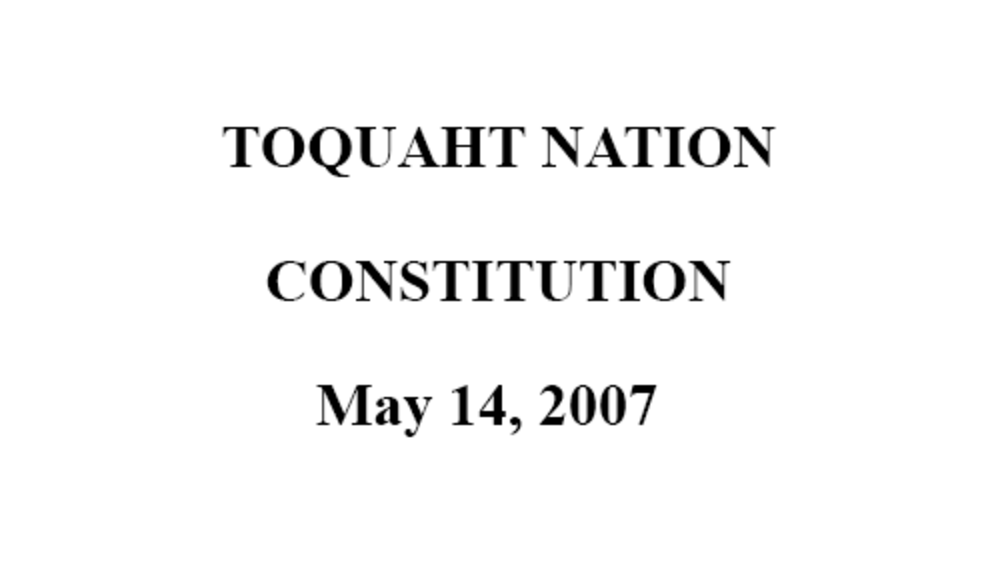
Toquaht Nation: Judiciary Functions/Dispute Resolution Excerpt
CHAPTER 7: DISPUTE RESOLUTION 7.1 On the Effective Date of the Maa-nulth Treaty, the Toquaht Council shall bring into force and effect a Toquaht Nation dispute resolution law which shall provide for, among other things, a public body to address disputes with the Toquaht Nation Government and within…

Prairie Band Potawatomi Nation: Distribution of Authority Excerpt
ARTICLE II - LAND Section 1. Recognition. We, the Prairie Band Potawatomi Nation, do not accept a diminishing of our sovereign status as a nation and of our vested or inherent rights by the act of adopting this constitution. Section 2. The Tribal Council shall establish a standing Committee vested…
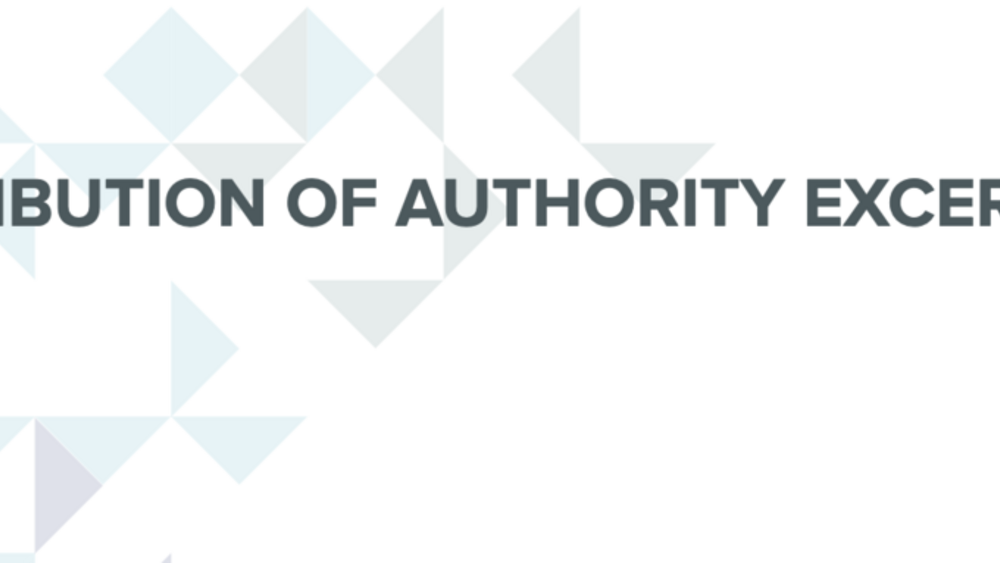
Kaw Nation: Distribution of Authority Excerpt
Section 3. General Council Powers. The General Council shall be the supreme legislative body of the Kaw Nation. A. The General Council is empowered to assist the Tribal Council and may, at its discretion, issue broad policy directives, which shall be dutifully pursued by the Tribal Council. Such…
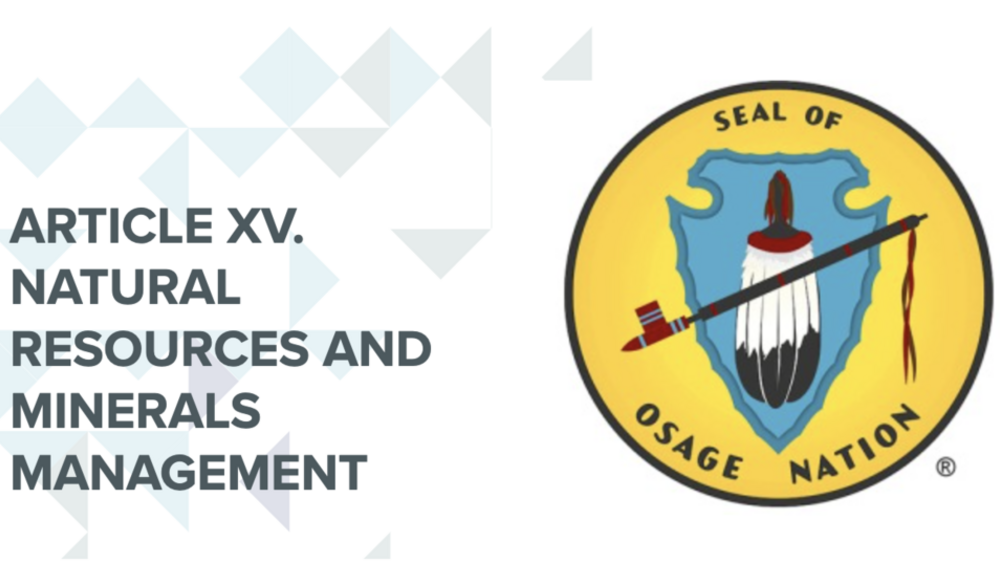
Osage Nation: Distribution of Authority Excerpt
ARTICLE XV. NATURAL RESOURCES AND MINERALS MANAGEMENT Section 1. General authorityThe legislature of the Osage Nation shall provide for the utilization, development and conservation of all natural resources within the territory of the Nation for the maximum benefit of the Osage…
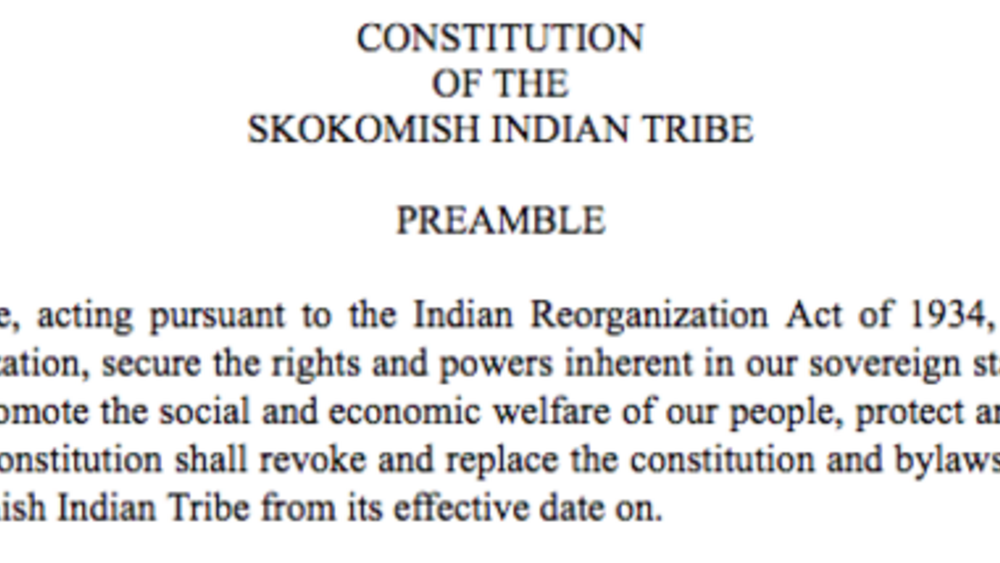
Skokomish Indian Tribe: Initiative & Referendum Excerpt
ARTICLE VIII - INITIATIVE Section 1. Right of Initiative. Voters of the Skokomish tribe shall have the right to cause a vote of the General Council on any legislation proposed by the voters and on any proposed or enacted ordinance or resolution of the Tribal Council. No later than thirty (30…
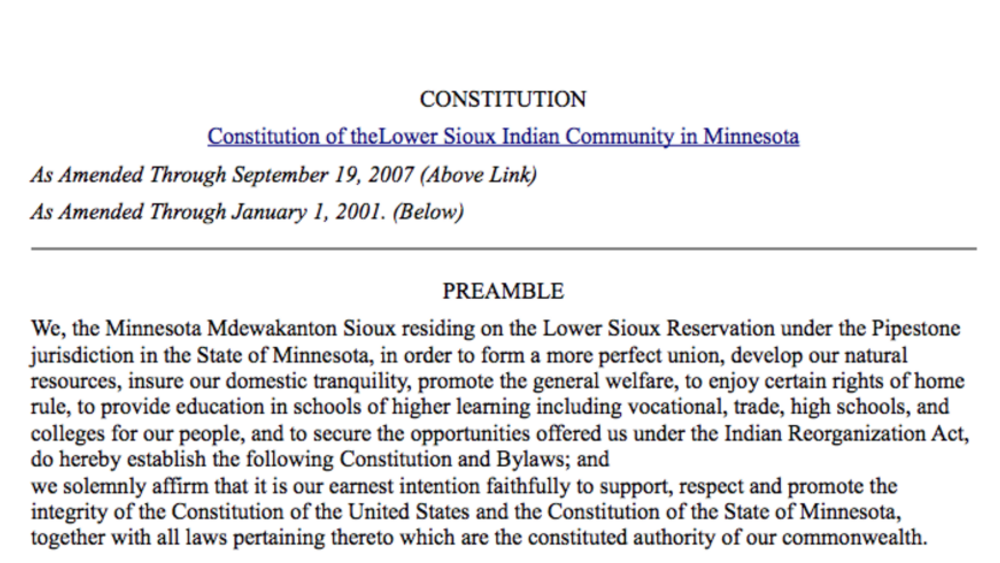
Lower Sioux Indian Community in Minnesota: Governmental Structure Excerpt
ARTICLE IV - GOVERNING BODY SECTION 1. The governing body of the Community organization shall be called "The Community Council of the Lower Sioux Indian Reservation", and shall be composed of five members who shall be duly elected by secret ballot by the qualified voters of the Community... SEC. 5…
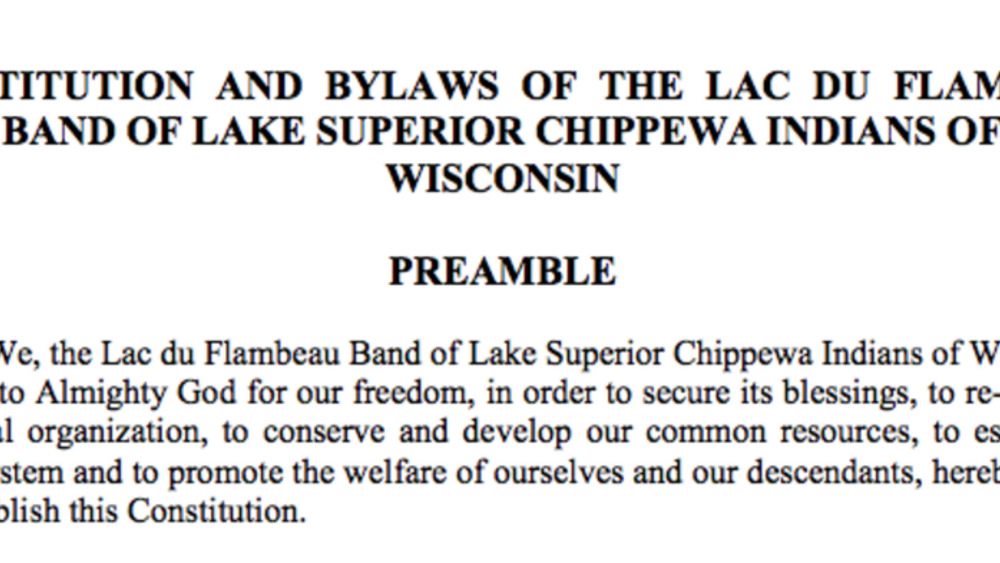
Lac du Flambeau Band of Lake Superior Chippewa Indians of Wisconsin: Governmental Structure Excerpt
ARTICLE III - THE GOVERNING BODY Section 1. The governing body of the Lac du Flambeau Band of Lake Superior Chippewa Indians of Wisconsin shall be the Tribal Council. Section 2. The Council shall consist of a President, Vice-President, Secretary, Treasurer, and eight (8) additional members. The…
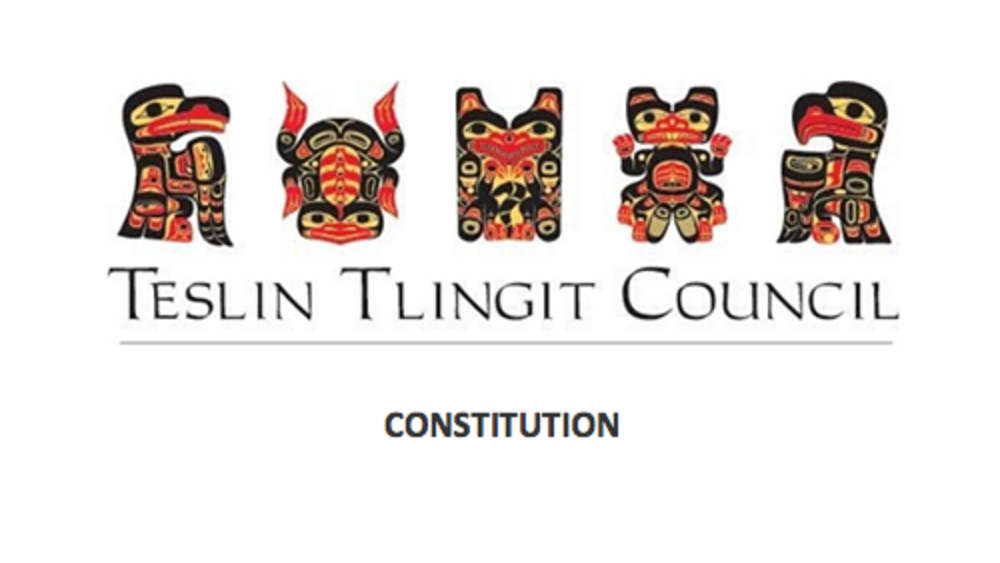
Teslin Tlingit: Governmental Structure Excerpt: Organization
6. ORGANIZATION 6.1 The powers, authority, jurisdiction, responsibility and duties of the Teslin Tlingit Council shall be exercised by one or more of the four branches of the government: the General Council; Executive Council; Elders Council and the Justice Council. 6.2 The four…

Ho-Chunk Nation: Governmental Structure Excerpt
ARTICLE III - ORGANIZATION OF THE GOVERNMENT Section 1. Sovereignty. The Ho-Chunk Nation possesses inherent sovereign powers by virtue of self-government and democracy. Section 2. Branches of Government. The government of the Ho-Chunk Nation shall be composed of four (4) branches: General Council,…
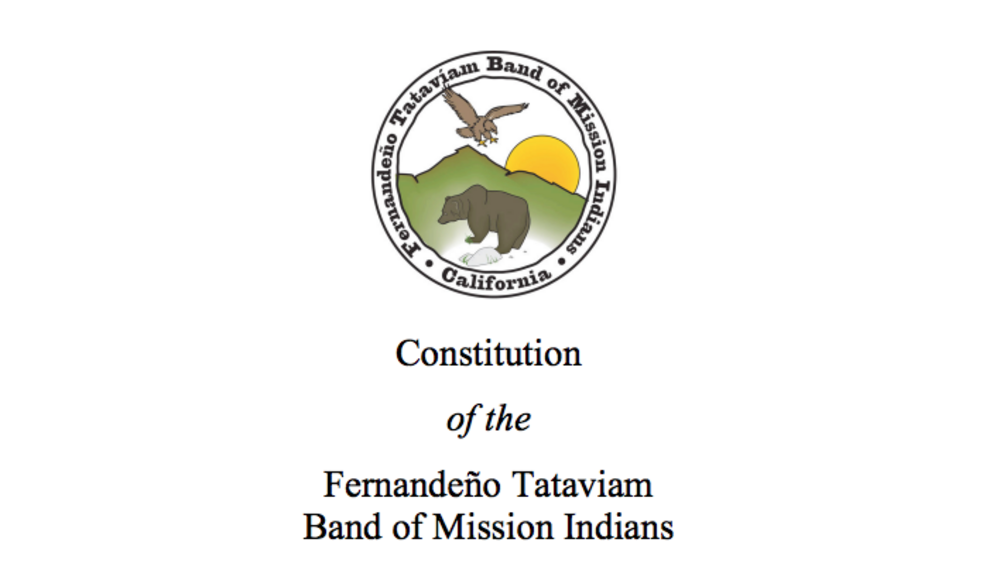
Fernandeño Tataviam Band of Mission Indians: Citizenship Excerpt
Article 7. Rights and Responsibilities of Citizens Section 1. All citizens of the Tribe are entitled to equal respect without regard to gender, age, or religion. All citizens shall enjoy equal opportunities to participate in the economic resources and activities of the Tribe, and no citizen shall…
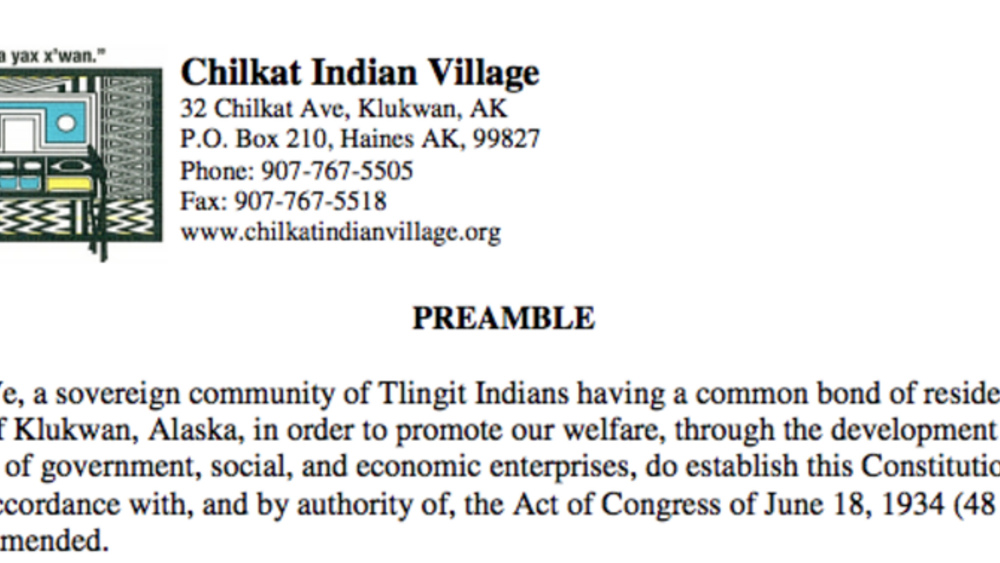
Chilkat Indian Village: Citizenship Excerpt
ARTICLE III — MEMBERSHIP Section 1. Defined: The membership of the Chilkat Indian Village shall consist of the following: (a) Original members.- All persons whose names appear on the 1940 census roll, prepared in accordance with the Instructions of the Secretary of the Interior for Organization in…

Comanche Nation: Citizenship Excerpt
ARTICLE III - MEMBERSHIP Section 1. The membership of the Comanche Nation shall consist of the following: (a) All persons, who received an allotment of land as members of the Comanche Nation under the Act of June 6, 1900 (31 Stat. 672), and subsequent Acts, shall be included as full blood members…

Tule River Indian Tribe: Citizenship Excerpt
ARTICLE II-MEMBERSHIP SECTION 1. The membership of the Tule River Tribe shall consist of the following: (a) All persons of Indian blood whose names a pear on the official census rolls of the Tule River Indian Reservation as of January 1, 1935; (b) All children born to any member of the Tule…
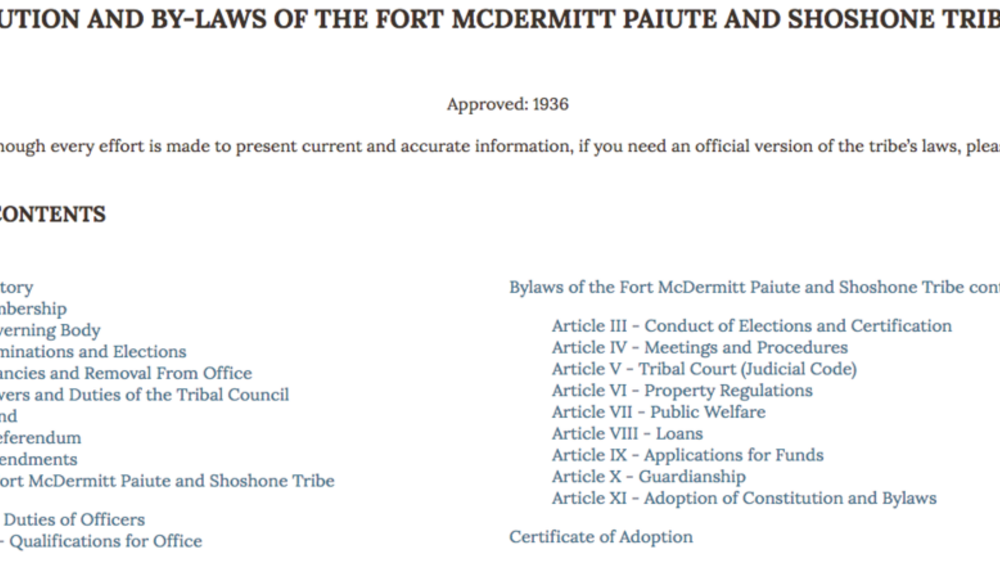
Fort McDermitt Paiute and Shoshone Tribe: Citizenship Excerpt
ARTICLE II -- MEMBERSHIP SECTION 1. The membership of the Fort McDermitt Paiute and Shoshone Tribe shall consist of-- (a) All original allottees at Fort McDermitt, and such of their descendants as do now maintain a bona-fide residence on the former Fort McDermitt Military Reserve. (b) Every child…

Citizen Potawatomi Nation: Citizenship Excerpt
ARTICLE 3 — MEMBERSHIP OF TRIBE Section 1. The membership of the Citizen Potawatomi Nation shall consist of the following persons: (a) All persons of Indian blood who were bona fide members of the Citizen Potawatomi Nation and who were enrolled or were entitled to be enrolled on the official census…
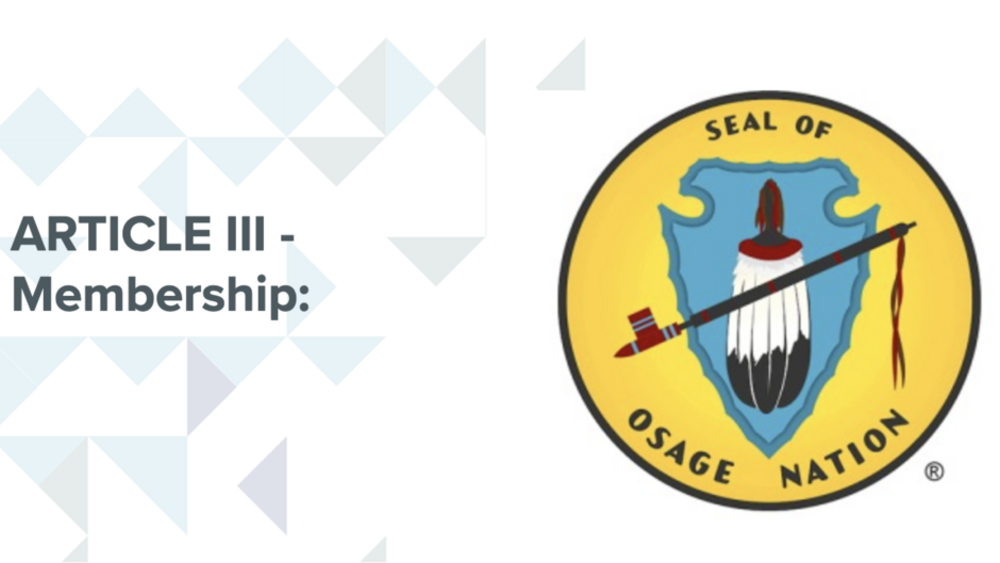
Osage Nation: Citizenship Excerpt
ARTICLE III - Membership: Section 1. Base membership roll: The base membership of the Osage Nation shall consist of those persons whose names appear on the final roll of the Osage Tribe of Indians pursuant to the Act of June 28, 1906 (34 Stat. 539). Section 2. Qualifications for membership: All…
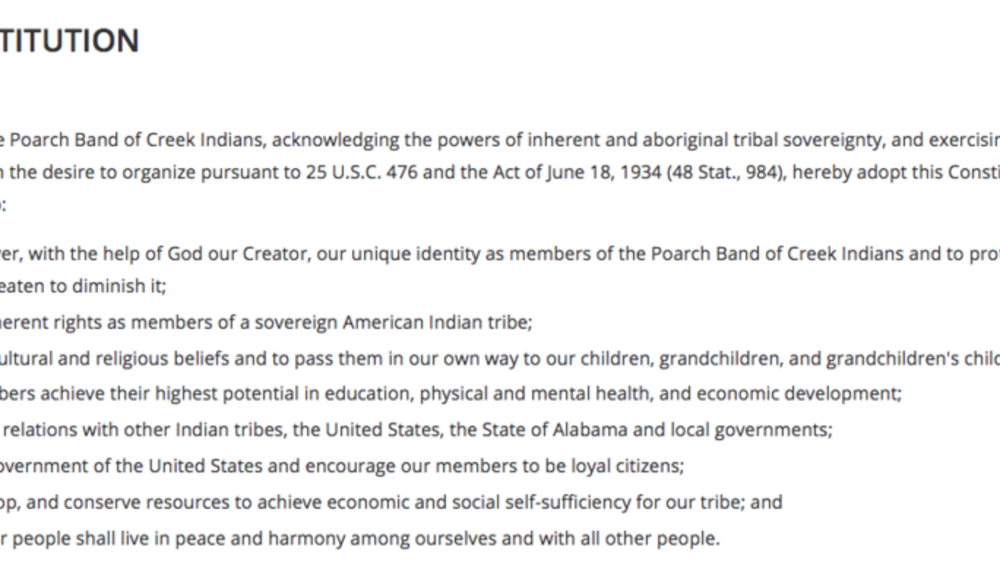
Poarch Band of Creek Indians: Preamble Excerpt
PREAMBLE We, the members of the Poarch Band of Creek Indians, acknowledging the powers of inherent and aboriginal tribal sovereignty, and exercising the right to self-determination, and with the desire to organize pursuant to 25 U.S.C. 476 and the Act of June 18, 1934 (48 Stat., 984), hereby adopt…

Haida Nation: Preamble Excerpt
HAIDA PROCLAMATION The Haida Nation is the rightful heir to Haida Gwaii. Our culture is born of respect; and intimacy with the land and sea and the air around us. Like the forests, the roots of our people are intertwined such that the greatest troubles cannot overcome us. We owe our existence to…

Hopi Tribe: Preamble Excerpt
Preamble: This Constitution, to be known as the Constitution and By-laws of the Hopi Tribe, is adopted by the self-governing Hopi and Tewa Villages of Arizona to provide a way of working together for peace and agreement between the villages, and of preserving the good things of Hopi life, and to…
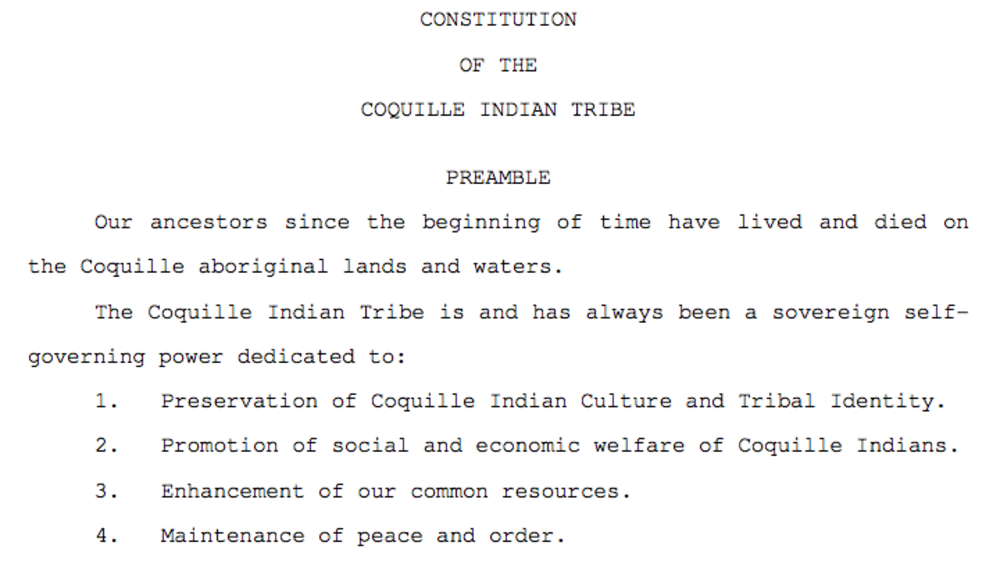
Coquille Indian Tribe: Preamble Excerpt
Preamble: Our ancestors since the beginning of time have lived and died on the Coquille aboriginal lands and waters. The Coquille Indian Tribe is and has always been a sovereign selfgoverning power dedicated to: 1. Preservation of Coquille Indian Culture and Tribal Identity. 2.…
Pagination
- First page
- …
- 21
- 22
- 23
- …
- Last page
